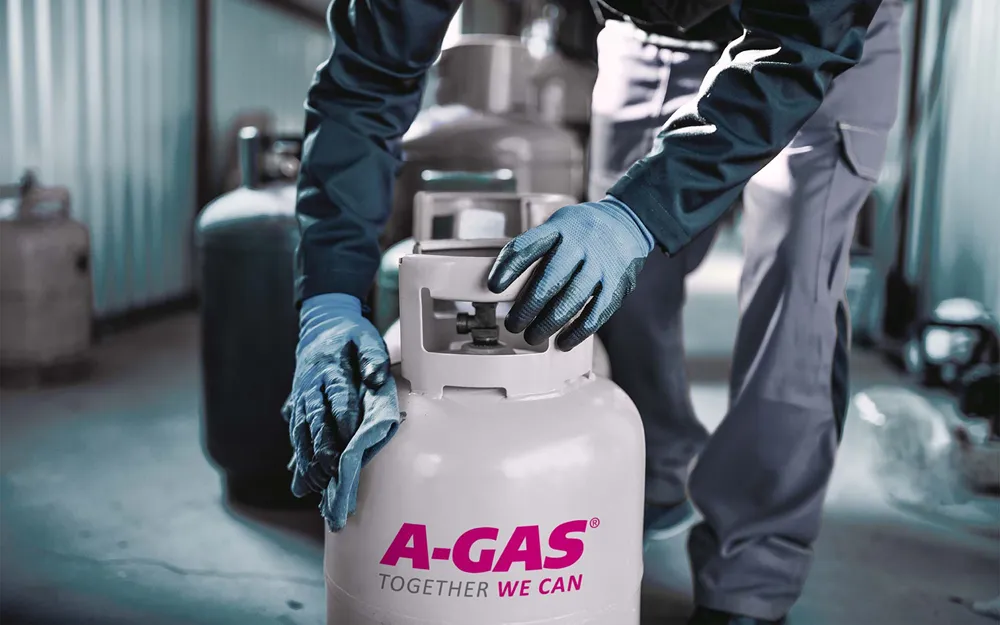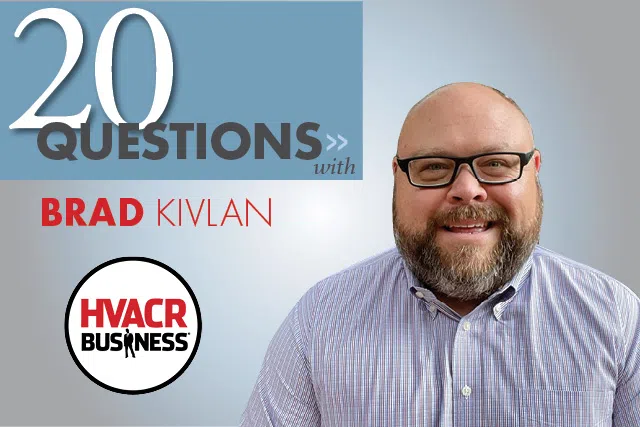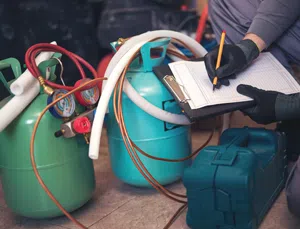Safeguarding the Environment, Your Customers, and Your Bottom Line through Smart Refrigerant Recovery.
Within the next six years, perhaps sooner, R-22 will no longer be produced or imported. However, demand for this popular refrigerant will extend beyond 2020.
This is where you come in.
As an HVACR business owner, you have a unique opportunity to convert recovered R-22, and other refrigerants, into a viable revenue stream. When product demands outpace supplies, refrigerants become valuable as reclaimers look to secure and reprocess gases that are no longer on the market. However, many HVACR companies continue to pay disposal fees and others, who sell their recovered gases, may not be getting the highest possible payouts.
To ensure you reap the full benefits of today’s refrigerant recovery market, know the following:
Refrigerant Recovery Should Be a Source of Profit
The most important thing to remember is that refrigerant recovery should be a source of profit, not loss. Many HVACR companies continue to pay disposal fees for R-22 and other gases that are sellable. Some refrigerants, depending on their type and purity levels, may not be eligible for sale because refrigerant reclaimers cannot process them for resale. However, a few reclaimers will accept these gases at no charge because they participate in carbon credit programs; other purchasers may charge nominal fees. Even if you have to pay a few fees here and there, your overall recovery efforts should yield a profit.
Yes, You Can Sell That
Contractors are often pleasantly surprised by the variety of refrigerants they can sell. Many professionals know that you can sell R-22, but what about R-500 or R-12? What about refrigerants that have been mixed? Don’t assume anything before you consult with a refrigerant reclaimer. Some reclaimers have extensive processing capabilities and can use a larger variety of gases, including mixed.
EPA Fines Are Costly
Refrigerant venting is a violation and the EPA is increasingly conducting random compliance audits to ensure HVACR businesses are properly disposing of recovered refrigerants. A venting violation can cost hundreds of thousands of dollars and the damage to a business’ reputation is immeasurable.
When selling your refrigerant, request EPA documentation. Reputable purchasers will be able to provide the necessary paperwork that documents the type and amount of recovered refrigerant, the date, and the collection source.
You Can Make a Substantial Profit
Refrigerant recovery is a great way to make a positive impact on your bottom line, but how much can you make? Potential earnings vary greatly and depend on the size of your business and recovery activity, as well as current market conditions for R-22 and other refrigerants. At this time, a one-man HVACR operation may yield $1,000 per year; a company with a 50-technician staff can make in excess of $75,000 annually.
Many HVACR professionals have found refrigerant recovery to be so profitable that they decide to pursue it as a line of business. These individuals collect gases from contractors, recyclers, scrap yards, and perform onsite refrigerant recovery at various facilities. In these cases, refrigerant recovery can result in a highly profitable business.
Here’s how it works: Most refrigerant buyback programs pay by the pound and reimbursement is based on refrigerant type, weight, and purity (the purer the refrigerant, the higher the payout). Many purchasers use a sliding scale; for example, per-pound rates are set for purities at or above 95 percent, 99 percent, etc. To get a rough idea of potential earnings, request a quote based on the estimated weight of your recovered refrigerants.
Your payouts will vary based on a variety of factors. How can you ensure you get the highest payout possible? Ask the following three questions.
1) Where Is Your Refrigerant Going? Ultimately, your refrigerant goes to an EPA-certified refrigerant reclaimer. However, not all purchasers are reclaimers. Going straight to the source eliminates the middleman and may result in higher payouts. A refrigerant reclaimer is also more likely to offer a cash payout option versus a credit-only option that must be applied to the purchase of new refrigerants.
Additionally, HVACR professionals report that customers are becoming more environmentally conscientious and want to ensure their refrigerant is handled responsibly. Working with an EPA-certified reclaimer often becomes a selling point for HVACR companies. In fact, some of these businesses hand out literature regarding the “recycling” of refrigerant, and how their business practices comply with EPA guidelines.
2) Do You Know What You Have? In the cooler months, many HVACR contractors find themselves surrounded by countless cylinders. Take inventory. What types of refrigerants do you have? How much of each? What are the purity levels?
Remember, your payout is based on purity and weight. Your refrigerant purchaser should provide you with a detailed purity and weight report, sometimes called a receiving report, to ensure fair compensation. Many HVACR contractors recommend using a handheld refrigerant identifier to assess the value of refrigerants prior to sale. These easy-to-use devices can be purchased online.
3) Are You Consolidating? (It’s easier than you think.) Many HVACR contractors have discovered that it pays to consolidate smaller cylinders into larger ones because they can secure higher buyback rates. On the purchasing side, it’s much easier to manage large quantities of refrigerants; therefore, sellers are willing to pay more per pound for gases consolidated into cylinders of 240-lbs. or larger.
Consolidation doesn’t have to be time consuming. In fact, many technicians rely on a “push-pull” method that facilitates a transfer rate of 10 pounds per minute (see a diagram https://divpc.com/index.php/offerings/fast-transfer-method). Transfers can be done using any standard recovery unit. Sometimes HVACR professionals shy away from consolidation because they are afraid to compromise refrigerant purities by mixing gases. However, consolidating one type of gas, i.e., R-22, from multiple sources rarely results in purity levels that lower buyback rates. Purity levels (and buyback rates) can be compromised by mixing different types of gases. To remedy this, maintain separate consolidation cylinders for your most frequently recovered refrigerants and ensure technicians properly tag their smaller cylinders when in the field.
Consolidation requires large cylinders, usually 240 lbs. or larger, and some reclaimers will provide them with a refundable deposit and arrange for free delivery and pickup. Others may charge rental fees or shipping costs. It is important to calculate any fees into your estimated payout to ensure you are getting the highest return for your refrigerant.
A Win-Win Opportunity
As members of the HVACR community, it is our job to serve customers and manage profitable businesses. However, it is also our responsibility to adhere to EPA guidelines and help ensure the sustainability of our environment. Refrigerant recovery enables us to do all of these things. Through smart refrigerant recovery we can safeguard the environment, our customers, and our bottom lines.
A Case for Consolidation
Brian Burkhart, a service manager for an HVACR business, Dallas Mechanical Group, in Dallas, Texas, started to consolidate and sell recovered R-22 in 2012. Since then, his company has realized more than $50,000 in profits from refrigerant recovery alone.
“It’s really a no brainer,” Burkhart said. “Previously, we were paying fees to exchange smaller tanks of R-22 and the process was time consuming because each cylinder required paperwork. Now, we consolidate and sell – no fees, no hassle.”
According to Burkhart, his technicians encounter two types of refrigerant on a regular basis – R-22 and R-410A. In the field, every company truck is equipped with a collection cylinder for each refrigerant and cylinders are filled accordingly. Upon returning to the shop after a shift, the technicians consolidate their R-22 cylinder into a 1,000-lb. tank. Once the tank is full, Burkhart alerts an EPA-certified reclaimer to arrange pickup and free shipping.
Using this simple consolidation process, Burkhart says that he has achieved a purity level of 99 percent every time he sold recovered R-22.
“I feel like a lot of companies are unaware of these programs,” Burkhart said. “It’s been one of the best business decisions we’ve made.”
R-22 Outlook
The EPA is continuing its phase-down of R-22, which will no longer be produced by 2018 or 2020 – depending upon the agency’s final ruling later this year. Last year, import and production activity was capped at 62.8 million pounds; this year it is capped at 51 million pounds.
Future caps are yet to be determined. In December, the EPA proposed a final timeline that entails possible scenarios, or “options,” for the remainder of the R-22 phase out. In the agency’s preferred option, 2015’s cap is set at 30 million pounds and drops by 6 million pounds per year until 2019, which would be the final year for R-22 production and imports. The second option is by far the most aggressive with a three-year linear drawdown that begins with a 27 million pound cap in 2015 and ends with a complete halt by 2018. The final option, the “estimation approach,” entails a 50 million pound cap in 2015 and allows the EPA to determine subsequent caps as the phase-out continues and market data is gathered.
Once this proposal rule is published in the Federal Register, the EPA will accept public comments for 60 days. At the time of this publication the rule has yet to be published, which means a rule may be finalized by mid- or late-2014.
Regardless of which scenario the EPA decides to implement, the demand for R-22 is projected to outpace its production and importation.
Corey Hundley is the director of recovery sales for Diversified Pure Chem, an EPA-certified refrigerant reclaimer (www.divpc.com). For the past five years he has helped HVACR professionals increase their revenues through EPA-compliant refrigerant recovery practices. You can reach Corey at 817-636-2089 or chundley@divpc.com.




